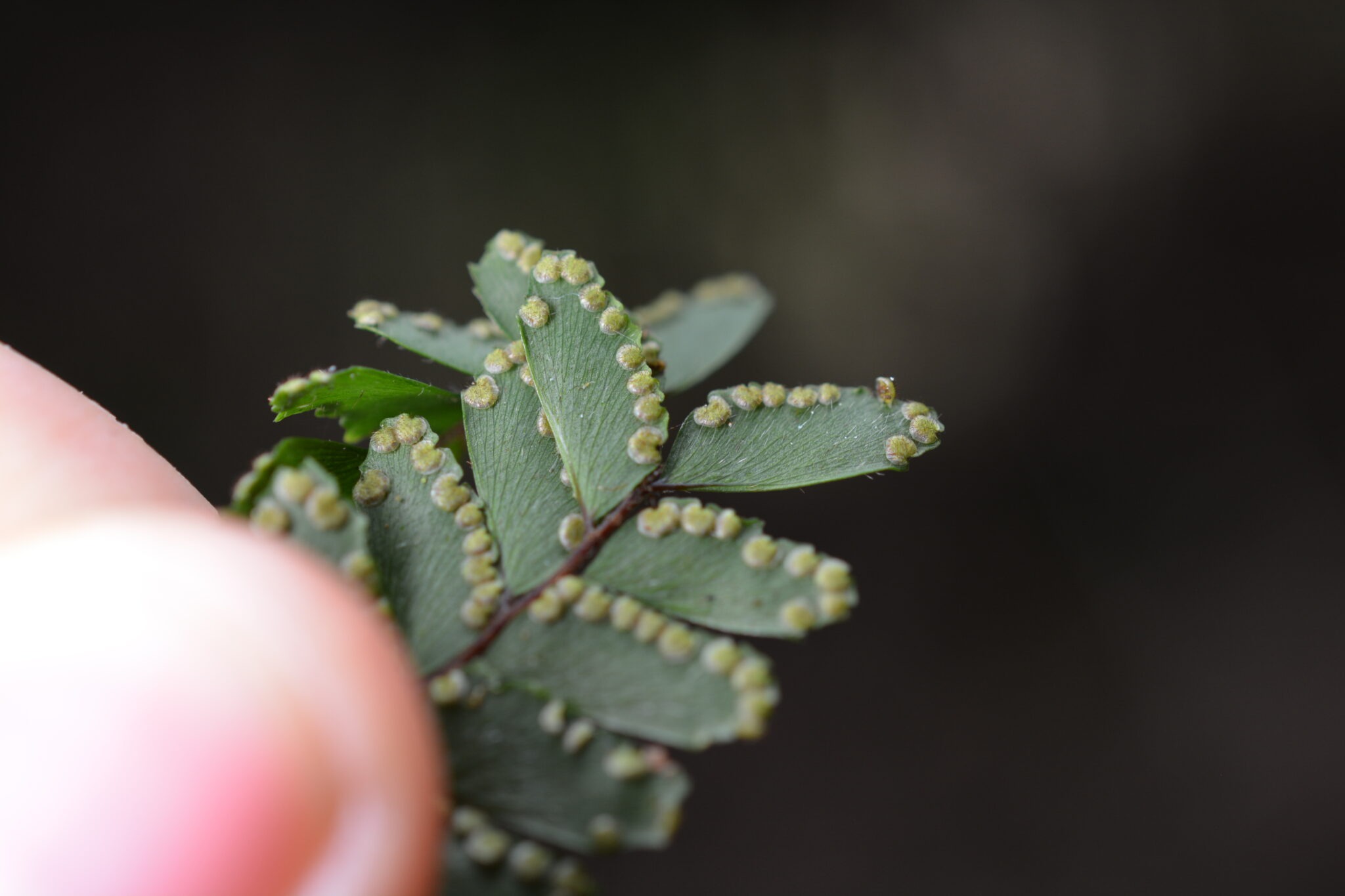
- News & Publications
- News
- Support
- About Us
- Education
- Research
- Research Programs
- Herbarium
- Library & Special Collections
- About the Library
- Library Exhibitions
- The Arader Natural History Collection of Art
- The Stansbery Collection for Botanical Art
- Rare Book Room Collection
- The Oliver G. Burk Children’s Collection
- History of the Library
- Library Inventory
- Library Archives Collection
- Archive Lens
- Collections Lens
- Botany Stories
- Discovery Resources
- Participate
- BRIT Press
- Research Resources
- Collections
Lunchtime Lecture Series: Fern Reproductive Ecology with Eddie Watkins, PhD
Please join us Tuesday, April 11th, for “The cost of doing business in ferns: reproductive ecology and swimming sperm.”
Like all organisms, plants have to carefully balance energy budgets across maintenance, growth, and reproduction. Over evolutionary time, plants have shifted to greater degrees of specialization in an apparent effort to more effectively control and regulate their carbon budgets. Seed plants are the ultimate specialists shifting much of their reproductive biology into cones and flowers. Unlike seed plants, ferns use their leaves as a site of both reproduction and carbon fixation. Balancing these processes can be tricky as the production of potentially costly fertile leaves may result in a reduction in overall carbon gain. In a way that is similar to cones and flowers in seed plants, some fern species have regulated reproduction to highly specialized fertile fronds that carry out little photosynthesis and may serve as significant carbon sinks. The story of the reproductive ecology of ferns cannot just be told by the sporophyte generation. Like their bryophytic ancestors, ferns produce motile swimming sperm: a trait that links these plants to their origins from aquatic algal ancestors. To date little is known about fern sperm physiology and ecology. Yet, sexual reproduction depends on these ephemeral independent gametes. This talk will explore aspects of the reproductive ecology of ferns from the lens of both the sporophyte and gametophyte generations. I will focus on the evolution of fertile:sterile frond dimorphy and draw conclusions around how frond reproductive strategies dictate species distributions. I will also explore some preliminary data on fern sperm longevity and the potential consequences of competition and longevity.
James “Eddie” Watkins is a Professor of Biology at Colgate University in Upstate New York. He completed his MS at Iowa State with Donald Farrar where he studied the systematics and ecology of Thelypteris. He completed his PhD at the University of Florida with Michelle Mack and Stephen Mulkey where he was the first biologist to employ modern physiological tools in the study of fern gametophyte physiology. He spent two years at Harvard University as a Mercer Fellow at the Arnold Arboretum where he explored the role of leaf hydraulics in tropical fern ecology and evolution. He is past president of the American Fern Society and is actively engaged in research on the ecophysiological consequences of the independent gametophyte generation in ferns.
Please come join us in the BRIT Commons from 12PM to 1PM. This is a free lecture and no registration is required. This lecture will be recorded and made available on the Fort Worth Botanic Garden’s YouTube page.
Date
- Apr 11 2023
- Expired!
Time
- 12:00 am - 1:00 pm

Lunchtime Lecture Series: Fern Reproductive Ecology with Eddie Watkins, PhD
Date
- Apr 11 2023
- Expired!
Time
- 12:00 am - 1:00 pm
Please join us Tuesday, April 11th, for “The cost of doing business in ferns: reproductive ecology and swimming sperm.”
Like all organisms, plants have to carefully balance energy budgets across maintenance, growth, and reproduction. Over evolutionary time, plants have shifted to greater degrees of specialization in an apparent effort to more effectively control and regulate their carbon budgets. Seed plants are the ultimate specialists shifting much of their reproductive biology into cones and flowers. Unlike seed plants, ferns use their leaves as a site of both reproduction and carbon fixation. Balancing these processes can be tricky as the production of potentially costly fertile leaves may result in a reduction in overall carbon gain. In a way that is similar to cones and flowers in seed plants, some fern species have regulated reproduction to highly specialized fertile fronds that carry out little photosynthesis and may serve as significant carbon sinks. The story of the reproductive ecology of ferns cannot just be told by the sporophyte generation. Like their bryophytic ancestors, ferns produce motile swimming sperm: a trait that links these plants to their origins from aquatic algal ancestors. To date little is known about fern sperm physiology and ecology. Yet, sexual reproduction depends on these ephemeral independent gametes. This talk will explore aspects of the reproductive ecology of ferns from the lens of both the sporophyte and gametophyte generations. I will focus on the evolution of fertile:sterile frond dimorphy and draw conclusions around how frond reproductive strategies dictate species distributions. I will also explore some preliminary data on fern sperm longevity and the potential consequences of competition and longevity.
James “Eddie” Watkins is a Professor of Biology at Colgate University in Upstate New York. He completed his MS at Iowa State with Donald Farrar where he studied the systematics and ecology of Thelypteris. He completed his PhD at the University of Florida with Michelle Mack and Stephen Mulkey where he was the first biologist to employ modern physiological tools in the study of fern gametophyte physiology. He spent two years at Harvard University as a Mercer Fellow at the Arnold Arboretum where he explored the role of leaf hydraulics in tropical fern ecology and evolution. He is past president of the American Fern Society and is actively engaged in research on the ecophysiological consequences of the independent gametophyte generation in ferns.
Please come join us in the BRIT Commons from 12PM to 1PM. This is a free lecture and no registration is required. This lecture will be recorded and made available on the Fort Worth Botanic Garden’s YouTube page.
